So you’re looking for information on ATMs in Thailand? You’re in the right place. After travelling around Thailand for 5 months and visiting the kingdom over 4 times, we know a thing or two about using ATMs and exchanging money. So, if you want the real, boots-on-ground advice about ATMs and changing money in Thailand, we’re here to provide the most accurate information you’ll find about withdrawing money as a foreigner here.
Quick tip: do not accept the dynamic currency conversion. Let your bank do it, you get a much better rate. Mine jumped from 40-42 baht/GBP to 45/GBP when I let my bank do it. Unfortunately, there is no such thing as fee-free withdrawals.
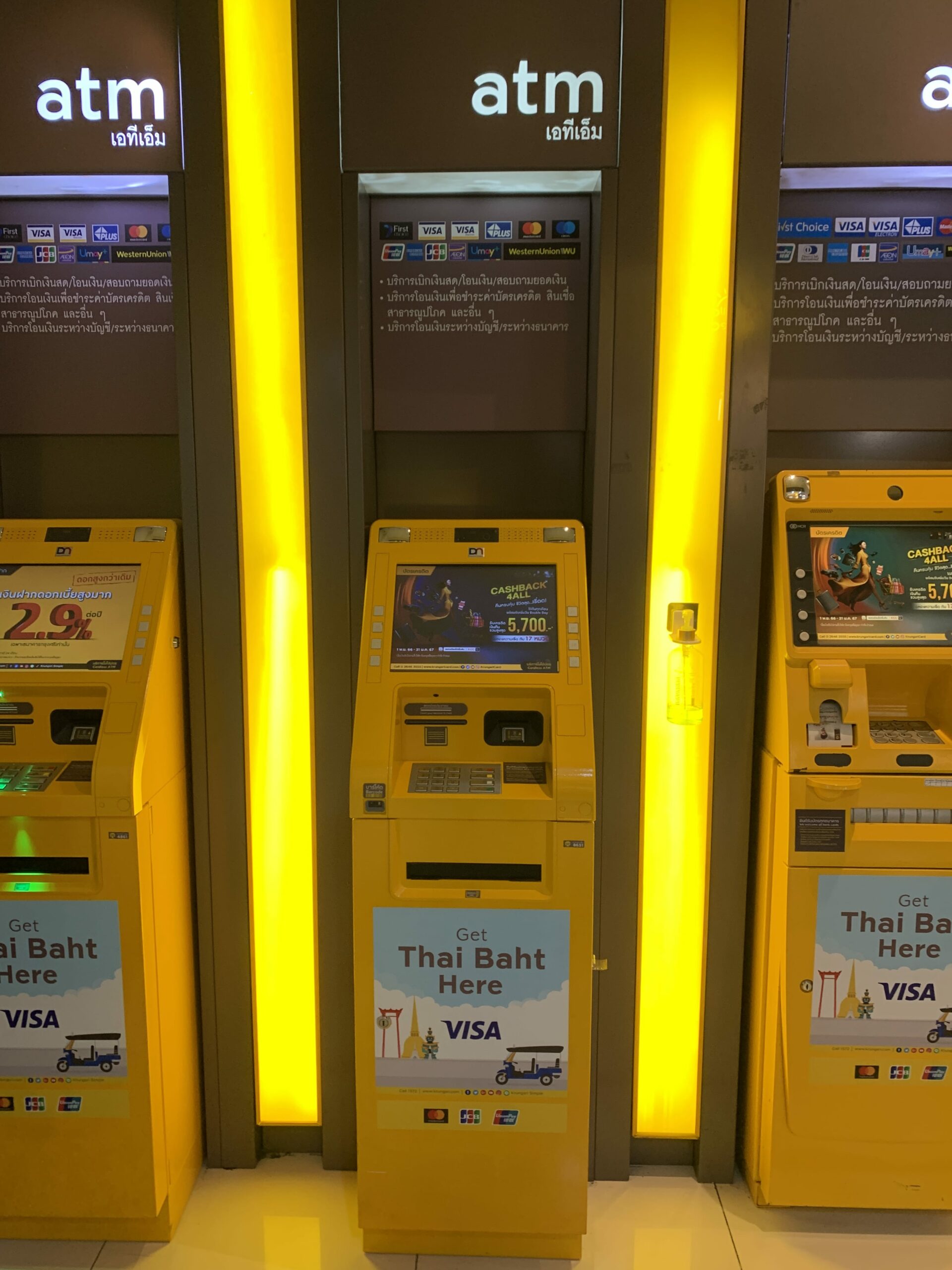
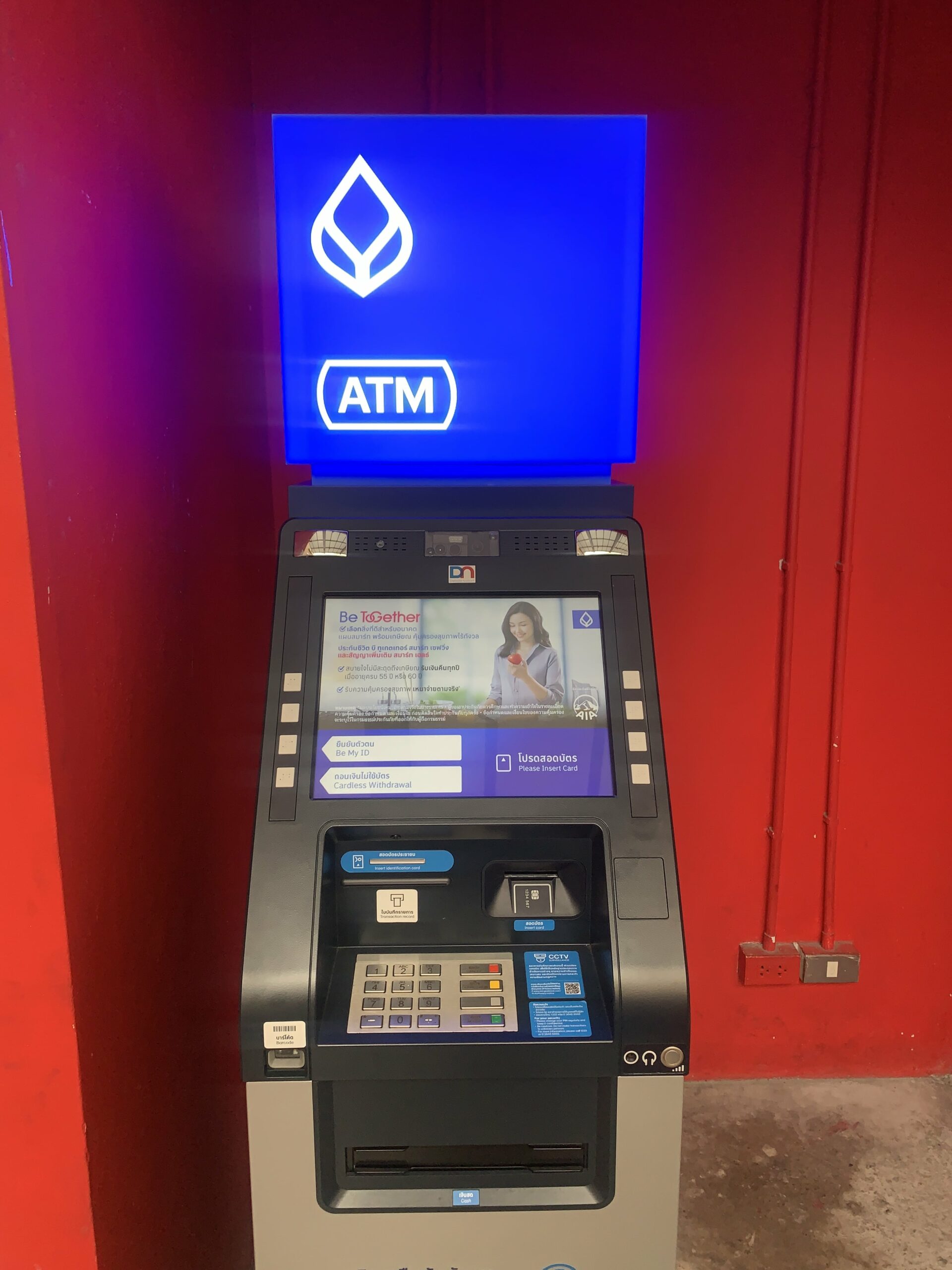
ATMs & Foreign Cards in Thailand
All banks in Thailand accept foreign cards, so you don’t have to worry about looking for a specific type. They accept AMEX, Visa, Mastercard, Maestro, Union Pay cards and more. However, different ATM brands sometimes offer better conversions, allow you a bigger withdrawal limit per time, and may also charge a lower fee (AEON is the lowest fee at 220 baht).
One of the best ATMs to look out for in Thailand is Krungthai Bank or Bangkok Bank. These allow larger withdrawals of 25,000 – 30,000 baht per time, so if you’re going to be withdrawing, rather than converting money, it’s best to do it here to avoid the constant fees as fees are up to 220 baht ($6-7, £5-6) per withdrawal. As you can tell these fees rack up pretty quickly.

In terms of lowest fee ATMs, you want to look for AEON bank. These will charge 150 baht ($4-5, £3-4) per transaction and are the lowest cost fee ATM in all of Thailand. However, you can only withdraw 20,000 baht per time, so work out which is best for you in terms of fees, because if you want an extra 10,000 baht from AEON bank you’ll end up paying more than just using Krungsai or Bangkok Bank.
The best foreign exchange rate ATM in Thailand is SCB (Siam Commerical Bank). You’ll find exchange rates of 44.5 baht to a £GBP here. Commonly ATMs give you terrible rates like 41-43 baht per £GBP (not sure what this is in $USD, sorry to my American audience).
However, with SCB, you can only withdraw 10,000 at a time so, with the fees, it might still be best to use Krungsri bank (worst exchange on ATM) or another higher withdrawal limit one.
Lowest Fee ATMs in Thailand
Here is a list of all the ATMs in Thailand, with their transaction charge and withdrawal limit:
| ATM Name | Transaction Charge | Withdrawal Limit |
|---|---|---|
| Citibank | 220 baht | 20,000 |
| Bangkok | 220 baht | 25,000 |
| Krungthai | 220 baht | 25,000 |
| CIMB | 220 baht | 20,000 |
| Thai Military | 220 baht | 10,000 |
| AEON | 150 baht | 20,000 |
| UOB | 220 baht | 10,000 |
| Kasilkorn | 220 baht | 10,000 |
| Krungsri | 220 baht | 30,000 |
| Siam Commercial Bank | 220 baht | 10,000 |
Based on my own experience AEON bank ATMs are quite hard to find unless you are near a Big C, Lotus, Max Valu, Makro, or malls. The best bank to use in this case if you want to withdraw larger amounts and avoid paying fees over and over again is Krungthai. Although they have a higher fee, they allow a bigger withdrawal limit, which will save you on fees.
You can additionally go to most malls, and they commonly have a floor with all ATMs in Bangkok, alongside foreign exchanges. This is the same for Phuket and any other major destination in Thailand.
To Exchange Money Before, At the Airport, Shop or just Withdraw?
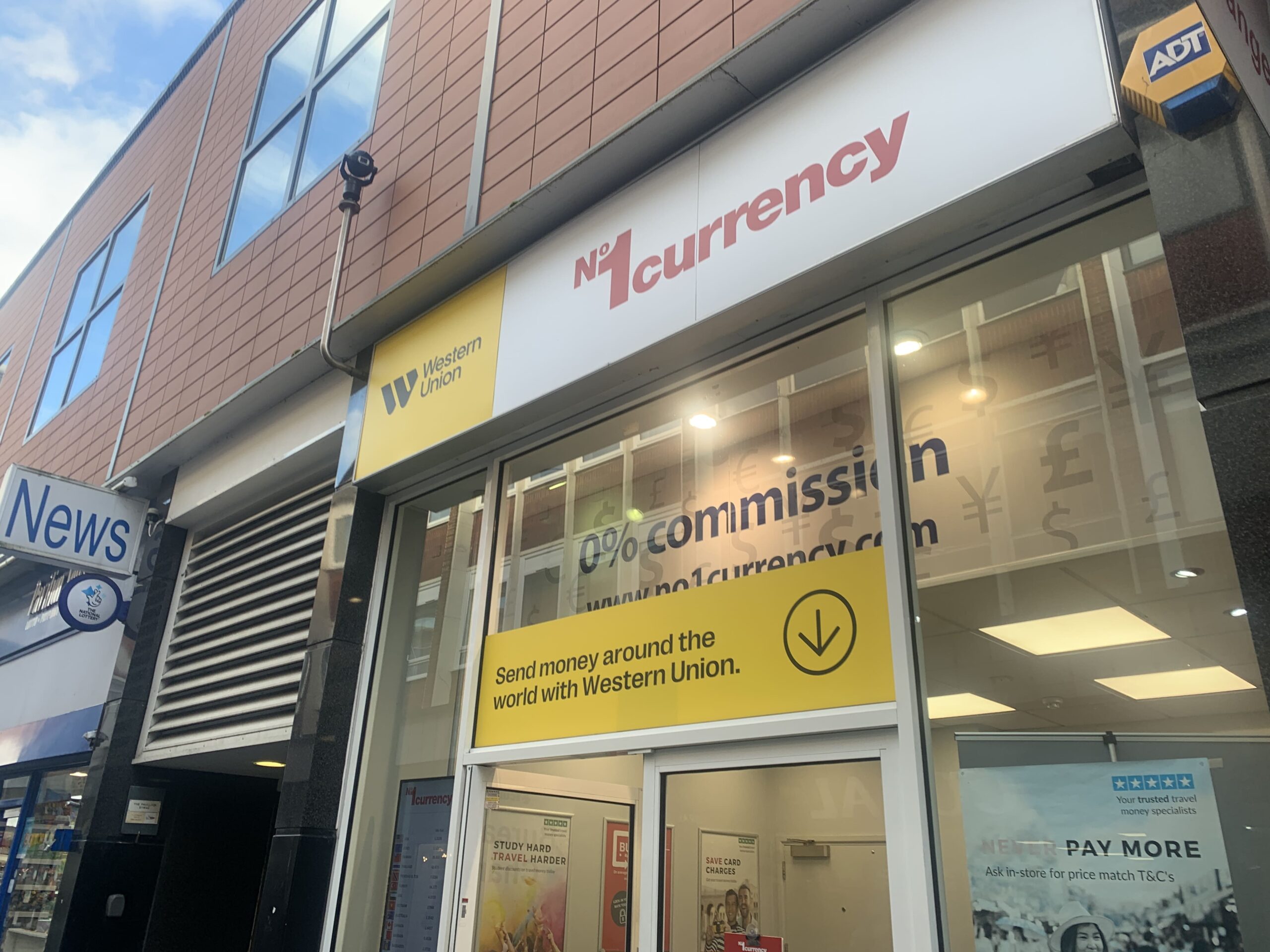




(click to enlarge all)
There are 3 ways you can exchange money in Thailand:
- FOREX Shop (cheapest – find pretty much anywhere in a tourist district)
- Airport (less expensive than ATM)
- ATM (high fee charges but convenient – can find almost anywhere)
It’s best to take your home currency with you and change in Thailand. They offer far better rates than any ATM, or home exchange. For instance, for £1, you’re able to find rates of ฿44 – 44.5, and for $1USD, you can get ฿35 – 35.5. Most ATMs will offer a conversion at around £1 to ฿42 – 42.5, or $1USD to ฿33 – 33.5. This makes exchanging at an exchange in Thailand far better.
I exchanged money before arriving in Bangkok (bad idea), and the rate they gave me took a £15 ($20ish) fee from the exchange. Stupidly I didn’t check beforehand, so I’d advise you do your research!
If you need money at the airport to purchase a Thai SIM card (it’s better to wait til you get out if you want to save money), then the best action is to convert your money at the airport exchange. They offer a slightly better rate than the ATM and don’t have the ฿220 baht fee.
Most exchanges in Thailand will accept these currencies:
- USD
- GBP
- EUR
- AUD
- JPY
- CHY
- CHF
- SGD
- HKD
- INR
- DKK
- NOK
- SEK
- TWD
- KRW
- MYR
- PHP
- NZD
- ZAR
- VND
- CAD
- IDR
- SAR
- AED
- OMR
- RUB
The Practical Way To Avoid Fees on ATMs in Thailand
Use AEON ATMs or Krungthai
If you want to use ATMs, the best way to avoid fees is to use an AEON ATM. These charge the lowest fees of 150 baht. Unfortunately, there is no way to avoid these fees, even if you use a Wise or Revolut card. You can also use Krungthai, which offers a 30,000 withdrawal limit, which will reduce the amount you need to use an ATM, therefore reducing fees.
Go To A Foreign Exchange Shop
Foreign exchange shops in Thailand offer the best rates anywhere. You should take your home currency with you in cash, and use this to exchange money. The rates are very competitive and much better than you will find in any ATM or your home country’s FOREX shops.
You will find FOREX shops in major tourist areas, but shop around if you want better rates as they’re always competing! You will find slightly better rates between shops, and it can make a big bit of difference if you’re travelling on a budget.
Get A Thai Bank Account
If you are an expat here, or you’re on a student visa, you can get a Thai bank account. All you need to do is prove residency in Thailand. If you can do this, any bank will allow you to open an account.
However, if you open an account here, it’s wise to transfer money from your home account when you want to withdraw cash and keep your savings in an account in your home country. If you want to reduce the fees of these transactions use a service like Western Union, Wise or Payoneer. Payoneer offers the best rates for sending money internationally.
I commonly use Payoneer to send money to the writers who do work on here periodically.

Avoid The Dynamic Currency Conversion
Most ATMs will ask if you want to pay in THB or your home currency. By doing this, they sneak in a couple of extra fees that you’ll pay on top and give you a lower rate. You want to make sure that you select THB to pay, and this will give you the cheapest conversion.
This is also the same in shops that take card payments. In some of the malls and more modern areas, you will be able to pay by card. If you are asked to convert to your home currency select no, and pay in THB instead.
Transfer Money To A TRUSTED Friend
Thai people do not pay fees to withdraw from ATMs. If you have a friend you can trust with your life here, you can send an international transfer using a payment service like Payoneer, and reduce fees considerably. They can then withdraw up to 50,000 baht for you from Krungthai bank. This will reduce the ATM fee entirely, and you can get a large sum out that can last you a very long time in Thailand.
Please be careful doing this. Make sure you know the person fully and trust them completely. You have been warned!
What If My Card Doesn’t Work in The ATM & I Can’t Withdraw Money?
If your card doesn’t work in the ATM and you have no cash to go to a Foreign Exchange shop, then you can use Western Union to transfer your money from your home bank account. There are many Western Union shops located around Thailand that you can use to do this. All you need is your passport to collect the money and the code that they will send you.
Transfers are very fast and typically take minutes, but can take up to 2-5 days if something goes wrong or your transaction needs approval.
I had to do this when in Pakistan as their ATMs do not accept most foreign cards. Do your research before travelling to see if your card is accepted by Thai ATMs.
Do I Need Cash or Can I Get By With Just Card Payments?
In Thailand most places only accept cash, so you will need to withdraw from an ATM or exchange money at a Foreign Exchange. In some places like malls, or modern restaurants, and more fancy areas, they will accept cards, however, this is uncommon throughout most of Thailand.
If you have access to a Thai bank, you can use the QR code payment system in Thailand to send money.
How Can I Be Safe With All That Cash on Me?
Use common sense, and be aware. Thailand is very safe, but robbery does happen here. Don’t take your entire amount of THB out with you when you are walking the streets. If you can, it’s best to store the rest in a safe back at your hotel, but sometimes these aren’t secure enough. In this case, use a decoy wallet with some old credit cards, bank cards that have no money in them, some official-looking ID, and some cash (enough to deter a robber and think they’ve got to the main stash).
After this, store the remainder of your money in different parts of your bag. One of the least conspicuous things you can do to store money is to get a waterproof zip-lock bag, put your money inside, put it in a non-see-through water bottle, and then fill up the water.
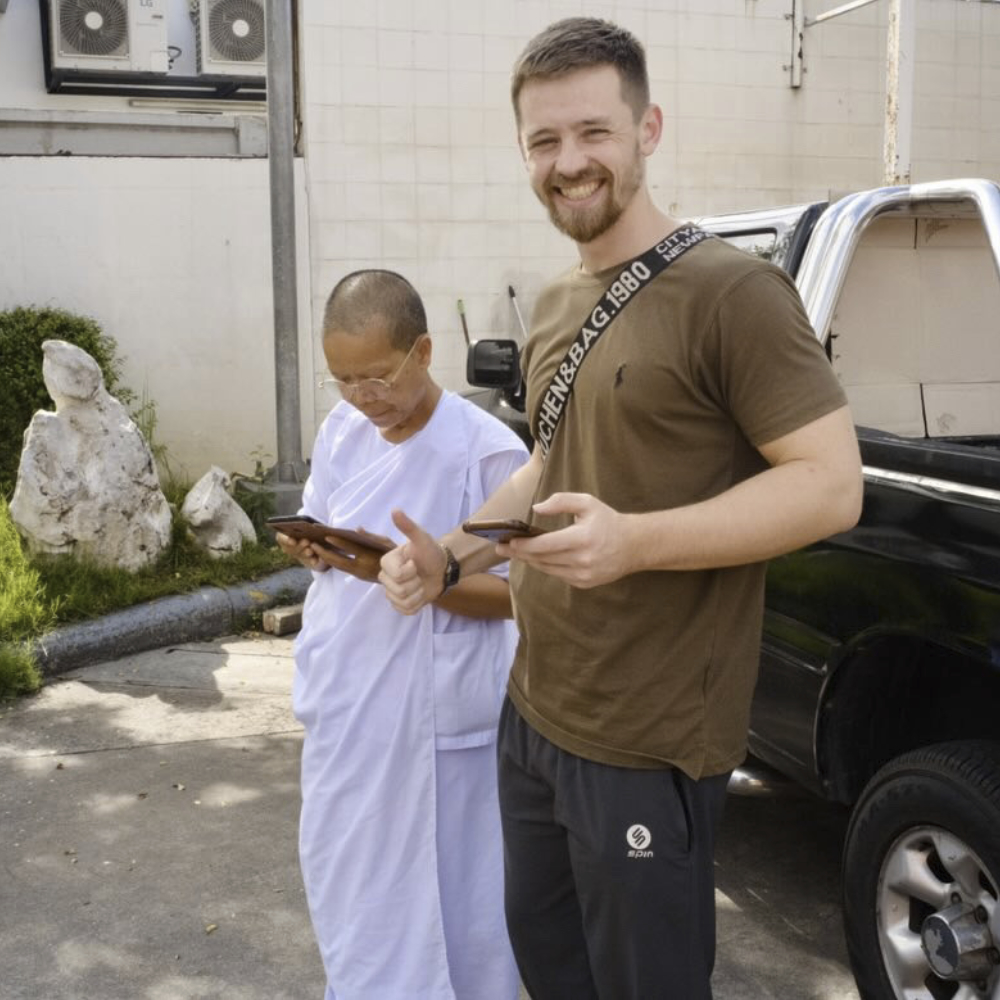
I’m Harry – and I was tired of the same old “10 best places I’ve never been but I’m writing about for some reason” blog posts. So… I’m a young traveller on a mission to travel the world and share my true, unfiltered experience, including all the gristly details. From packing my life into one bag for a year, to traveling Vietnam by motorbike, to sorting out Visas for specific countries – I’ve done it all, am doing it all and only give my advice on things I have done – not regurgitated cr*p from another source *cough* most publications *cough*. So bear with us! This project will take some time to grow, and will take a fair bit of money. But I’m determined to make it the single best source of information about traveling on the internet.
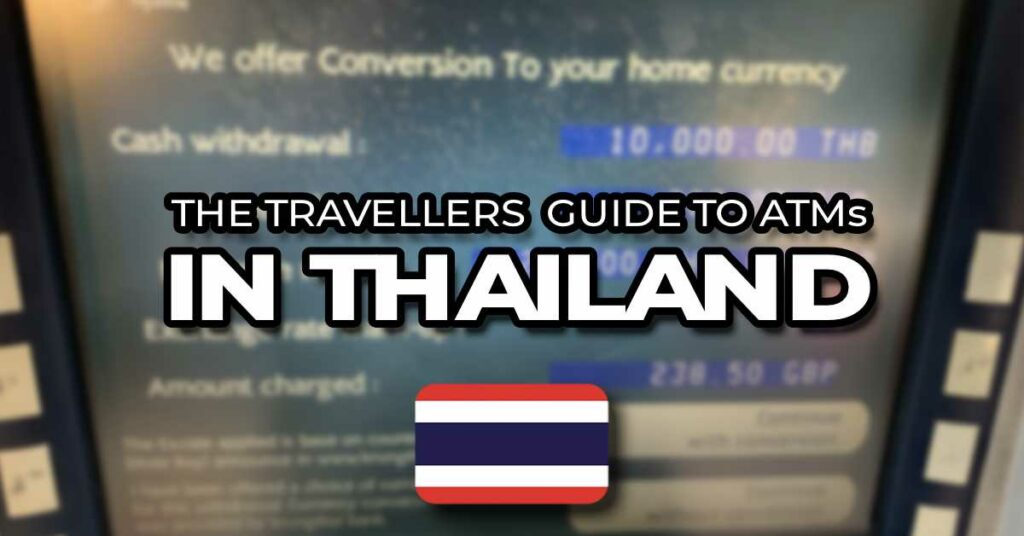

You quote the banks exchange rate, but the rates will usually be determined by you card company (VISA, Mastercard, … ) as long as you select to pay in local currency (THB).
Hey Tom thanks for letting me know. How could you possibly help me find where the issue is? Do you mean about the dynamic conversion rates? If so, that’s addressed in the article at the very top, saying that your bank will determine the rates, not the ATM’s bank, but only if you don’t select dynamic currency conversion. Cheers!